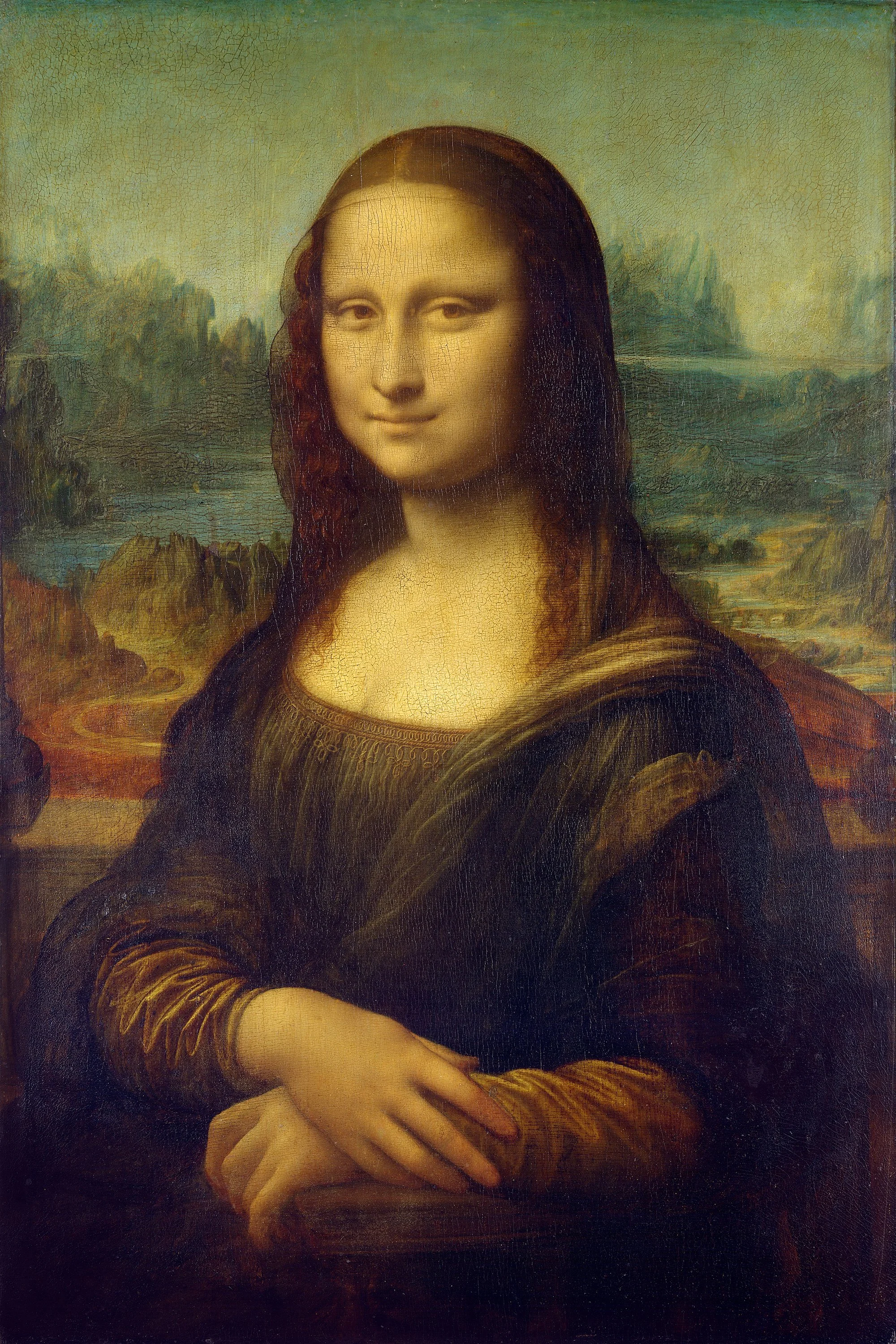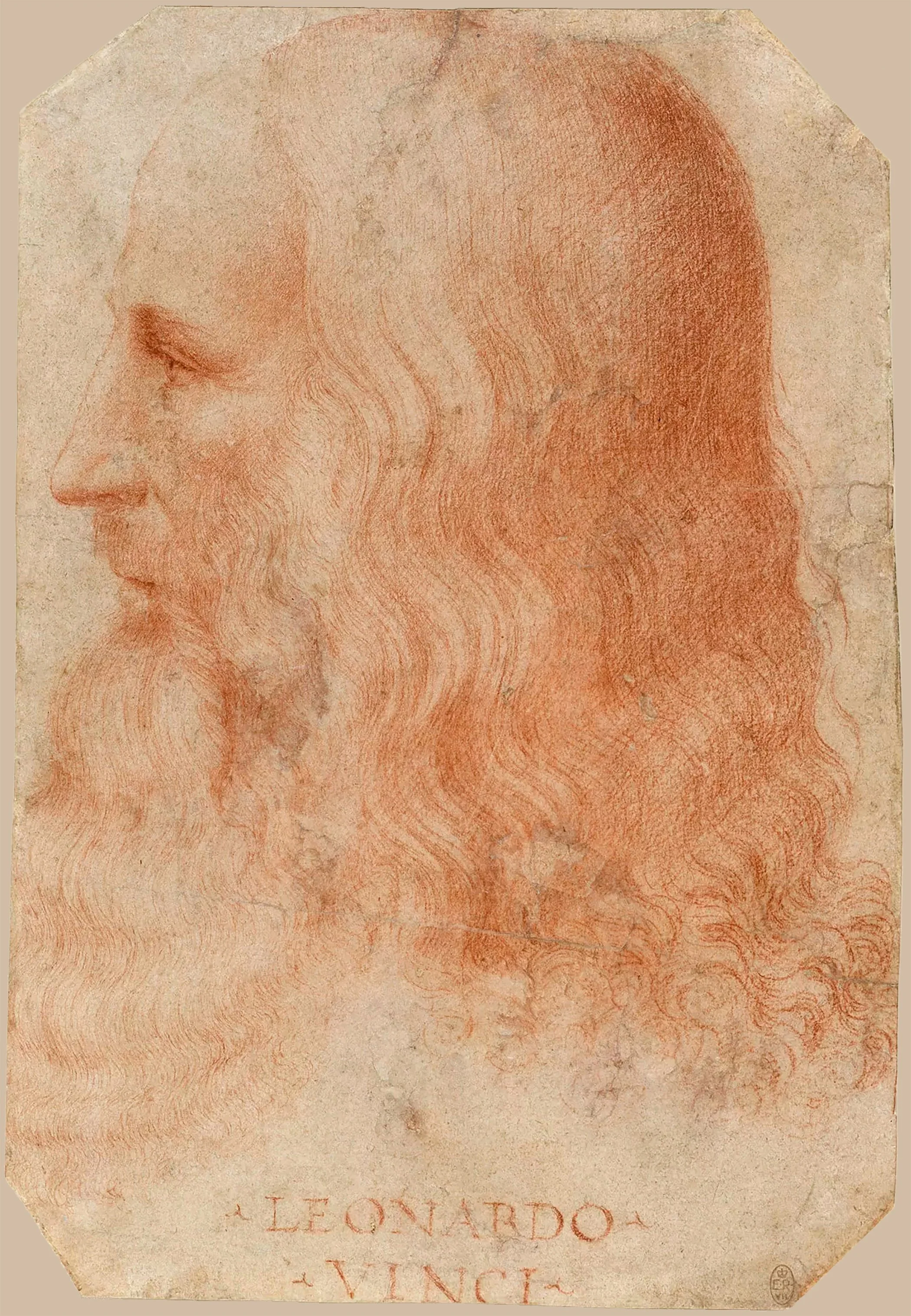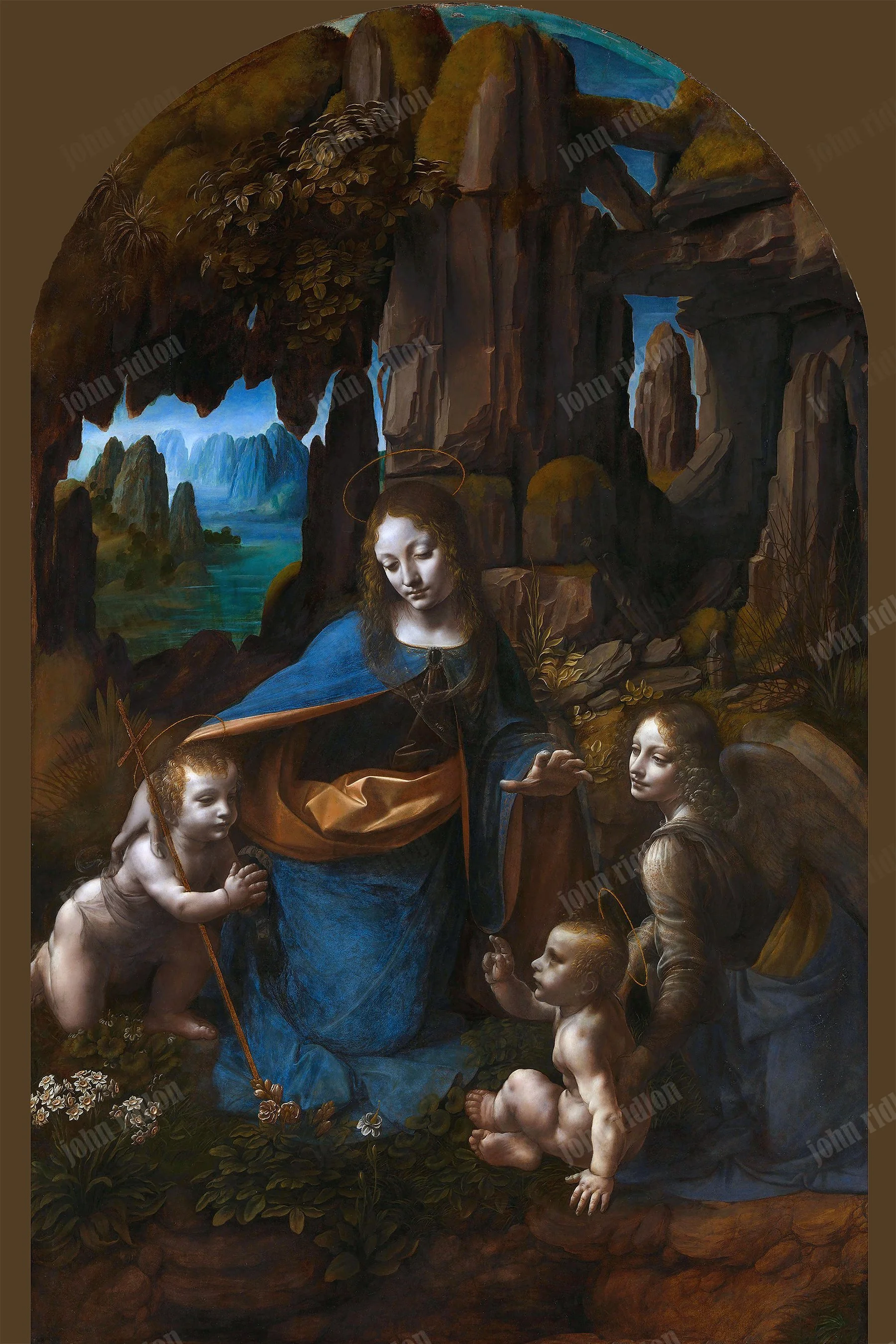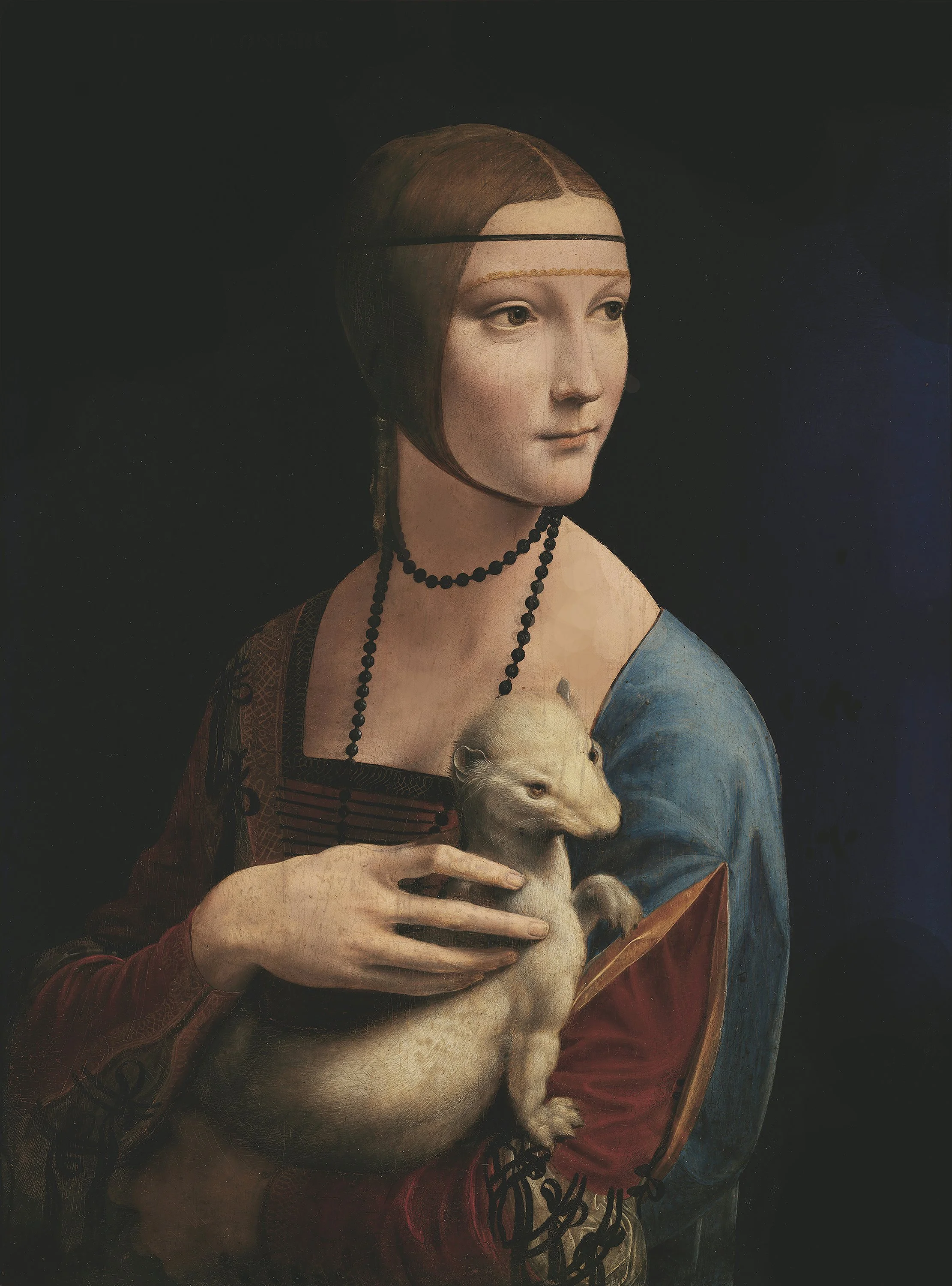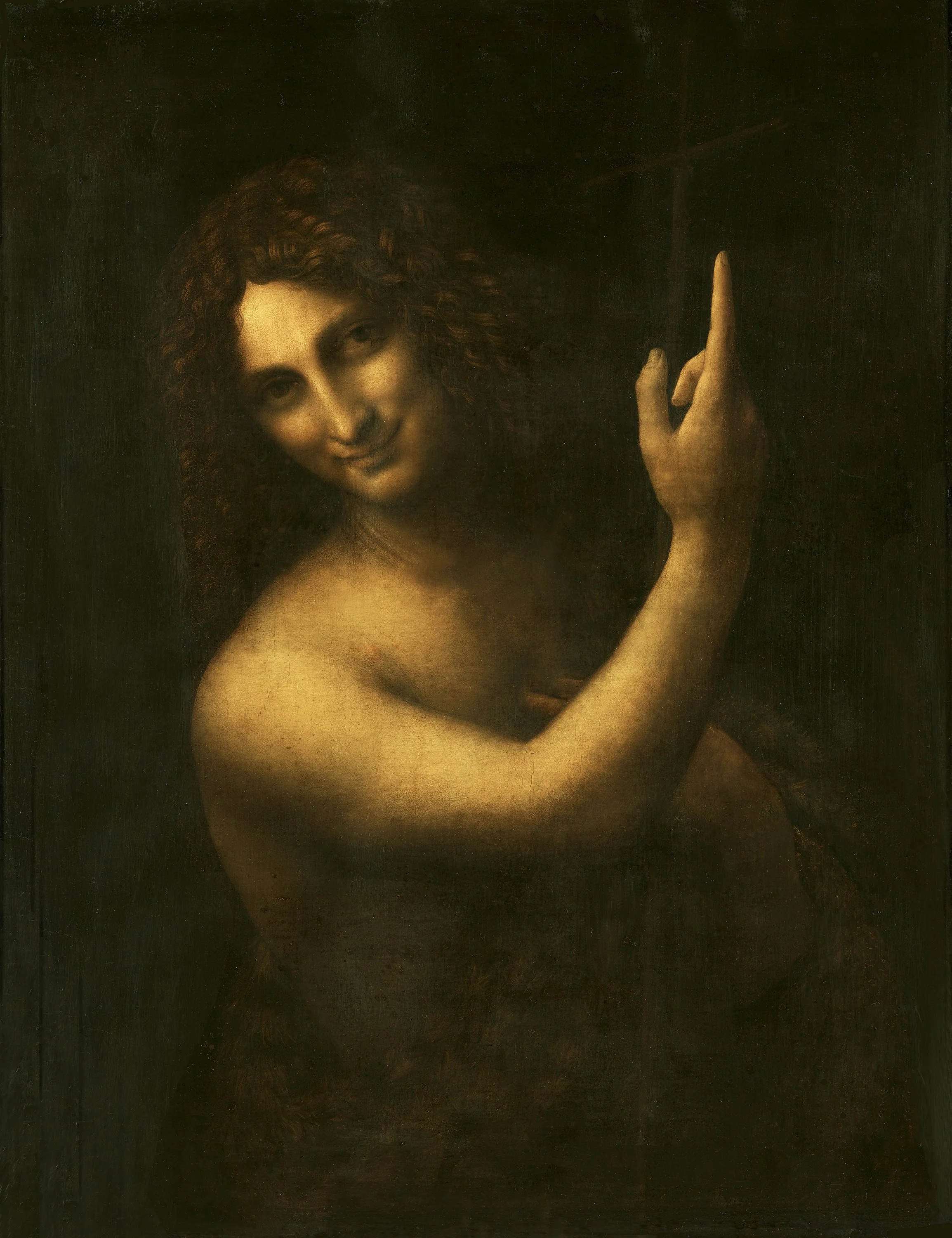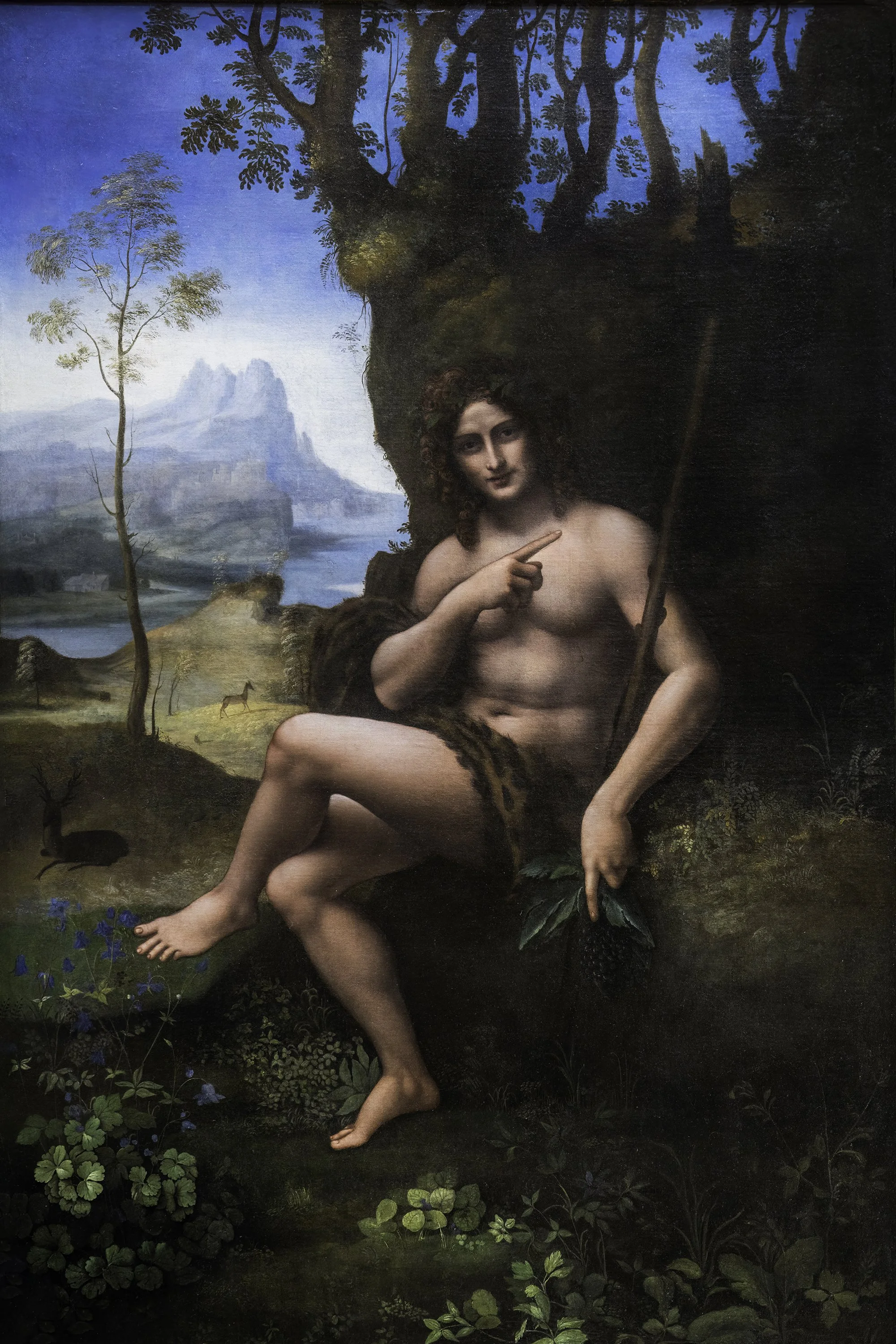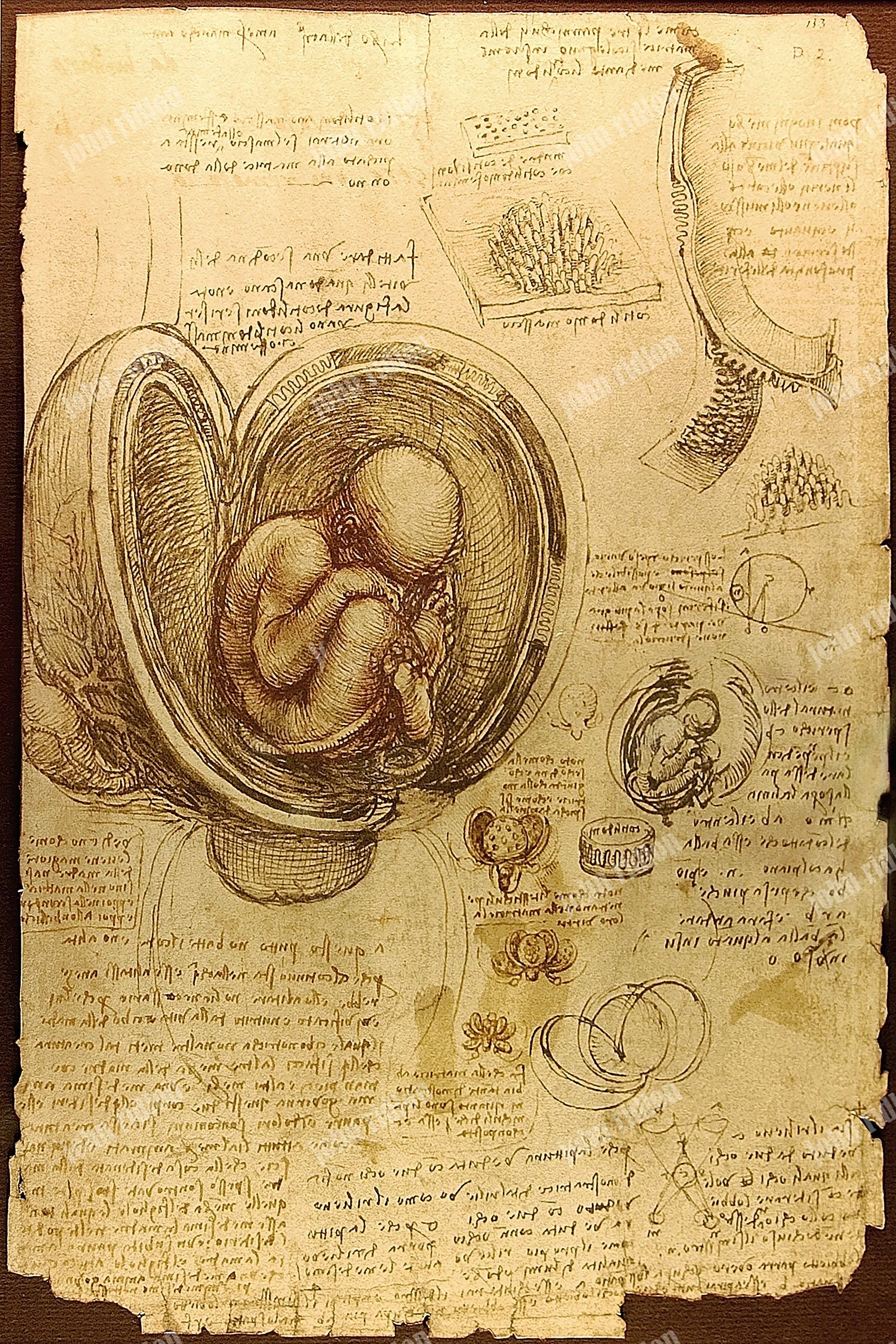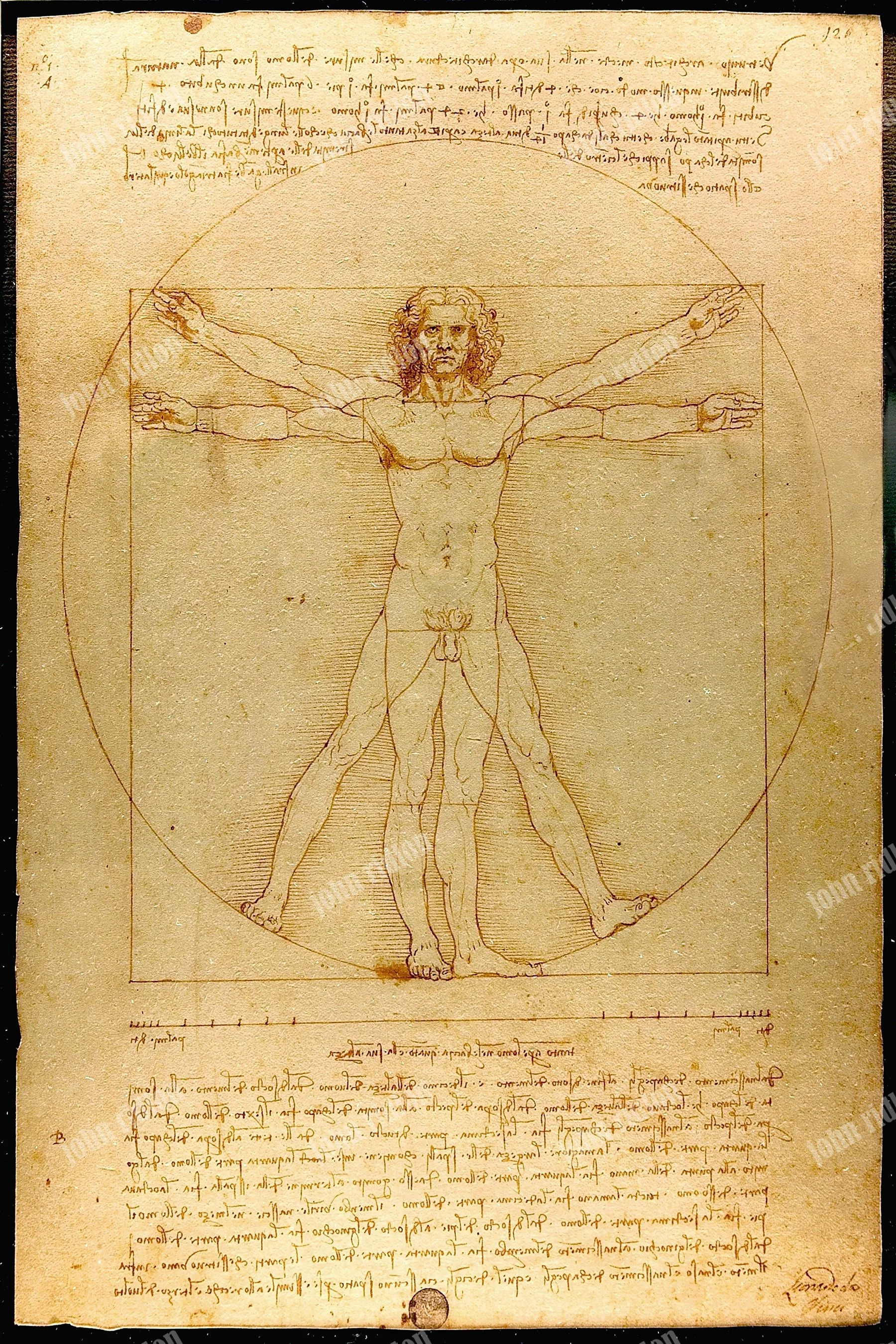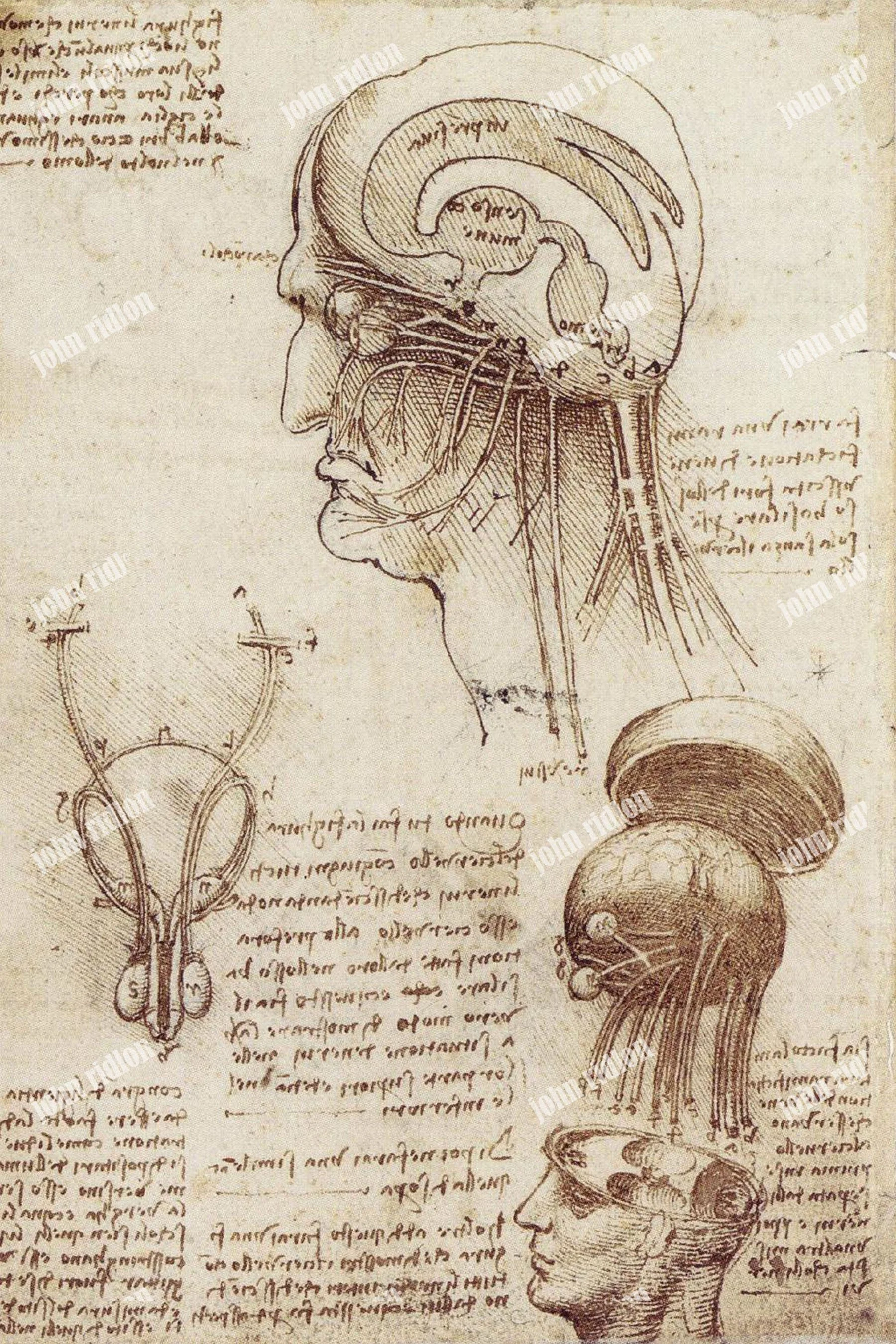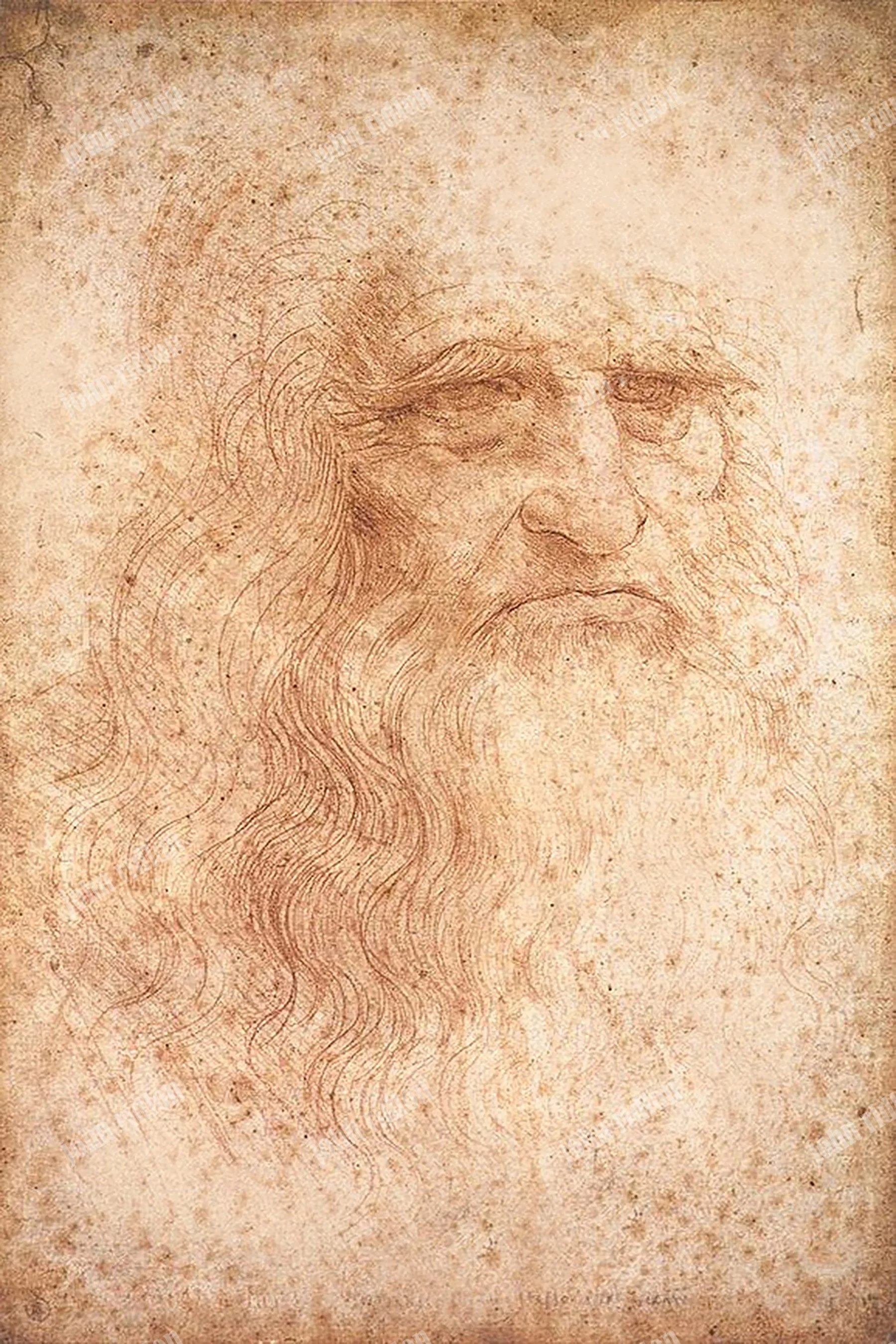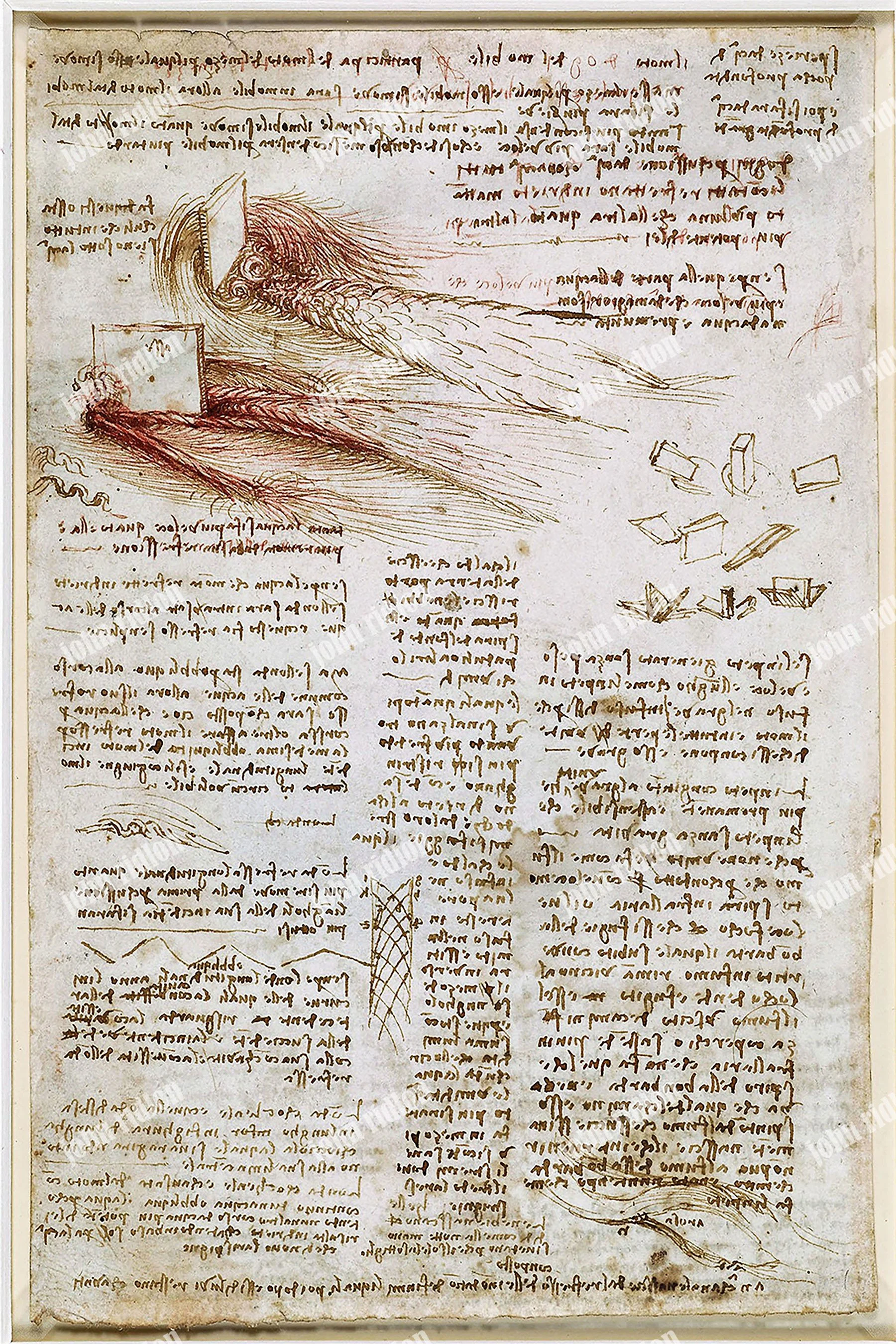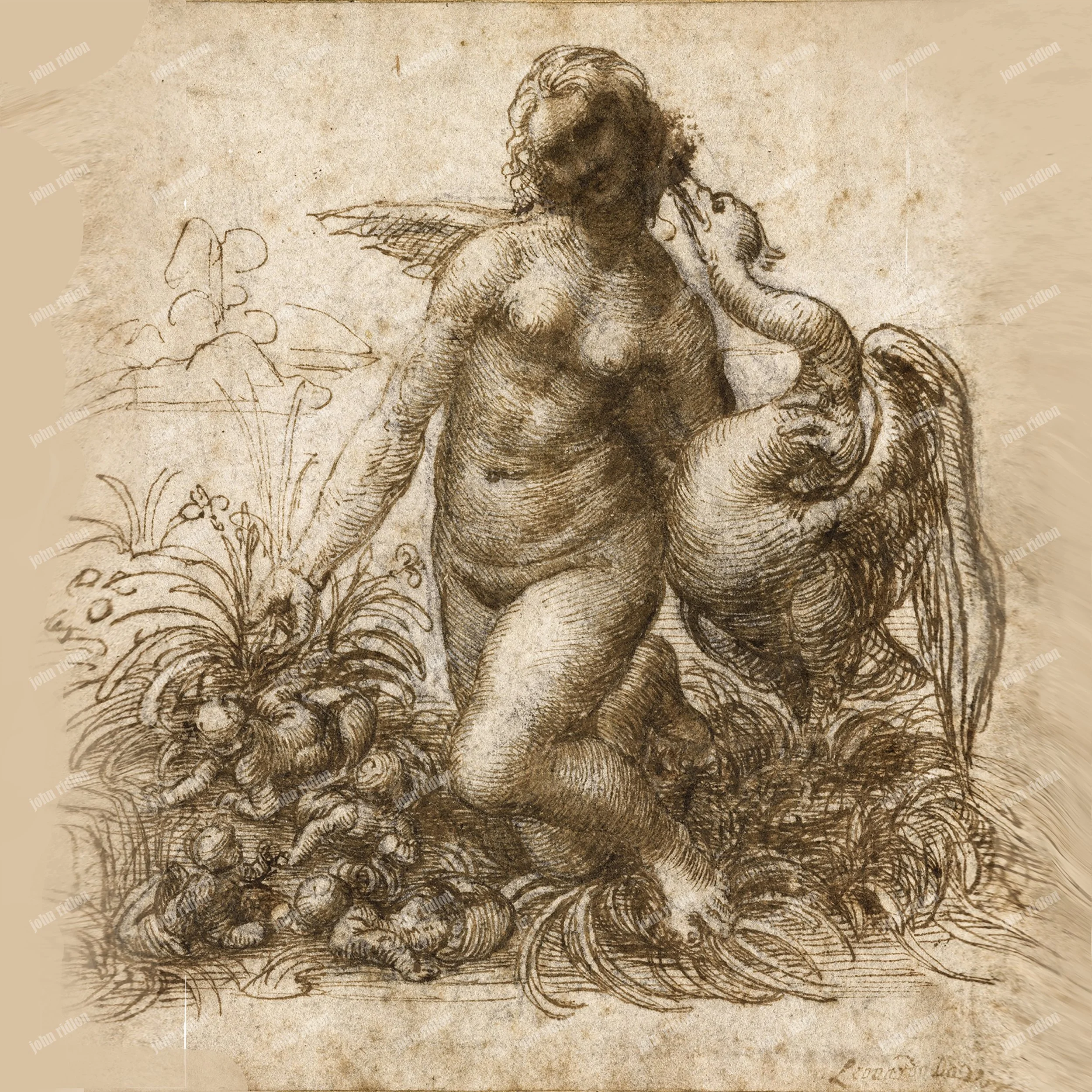Leonardo Da Vinci
Mona Lisa, 1510
Annunciation, 1476
Portrait of Leonardo - Francesco Melzi, 1515
Virgin of the Rocks. 1484
Lady with an Ermine, 1491
Saint John the Baptist, 1516
Bacchus, 1515
Studies of Embryos, 1511
Vitruve Luc Viatour, 1490
Brain Physiology, 1490
Presumed Self-Portrait,1515
Water Study, 1508
Disegni per la Leda, 1510
Madonna Study, 1478
The Biography of Leonardo da Vinci
Leonardo da Vinci: The Architect of Wonder
Born: April 15, 1452 – Anchiano, Republic of Florence
Died: May 2, 1519 – Clos Lucé, Amboise, France
Legacy: A visionary polymath whose genius encompassed painting, anatomy, engineering, architecture, botany, philosophy, and the lyrical observation of nature itself
Childhood in Vinci: Nature as First Teacher
Leonardo’s formative years unfolded in the pastoral serenity of Tuscany, where the hills, olive groves, and winding streams served as his earliest mentors. Born out of wedlock to Ser Piero, a Florentine notary, and Caterina, a peasant woman, Leonardo was denied access to formal education in Latin and classical literature. Yet this exclusion proved liberating. Unbound by scholastic rigidity, he cultivated a tactile, empirical intelligence—one that favored observation over doctrine, curiosity over conformity.
As a child, he sketched birds mid-flight, traced the eddies of water, and studied the intricate geometry of leaves and flowers. These were not idle distractions—they were the foundation of a lifelong inquiry into the mechanics of nature and the metaphysical harmony that underlies it. His notebooks, filled with mirrored script and anatomical sketches, reveal a mind that saw no boundary between science and art, between the visible and the invisible.
Apprenticeship and Artistic Awakening
At age 14, Leonardo was apprenticed to Andrea del Verrocchio in Florence—a workshop that buzzed with the energy of rinnovation. There, he absorbed the disciplines of painting, sculpture, metallurgy, mechanics, and architectural drafting. His earliest known contribution was the angel in Verrocchio’s Baptism of Christ, a figure so graceful and assured that, according to legend, Verrocchio abandoned painting altogether, humbled by his pupil’s talent.
By 1472, Leonardo had earned his place in the Guild of Saint Luke as a master. Yet he remained intellectually restless. He often left commissions unfinished—not from indifference, but because his mind was perpetually leaping ahead, drawn to new problems, new forms, new frontiers. His notebooks teem with inventions: flying machines, hydraulic systems, anatomical dissections, and philosophical musings. He was not merely an artist—he was a seeker.
🖼️ The Painter of Souls
Leonardo’s paintings transcend representation. They are psychological landscapes—meditations on the inner life, the divine mystery, and the fragile beauty of human expression.
• The Last Supper (1495–1498): Commissioned for the Convent of Santa Maria delle Grazie in Milan, this fresco captures the instant Christ reveals his impending betrayal. Each apostle responds with distinct emotion and gesture, creating a tableau of spiritual and psychological tension. The composition is both theatrical and intimate, a study in narrative choreography.
• Mona Lisa (c. 1503–1519): Perhaps the most enigmatic portrait in history, her smile is a riddle, her gaze a mirror. Leonardo’s use of sfumato—the subtle blending of light and shadow—creates a presence that seems to hover between reality and dream. She is not merely painted; she is conjured.
• Virgin of the Rocks, Lady with an Ermine, and St. John the Baptist: These works explore the divine within the human form, and the human within the divine. They are infused with symbolic depth, anatomical precision, and a reverence for mystery.
Though Leonardo completed fewer than twenty paintings, each is a universe unto itself—slowly conceived, meticulously executed, and philosophically profound. His art was not a product of haste, but of contemplation. He painted not to please, but to understand.
The Engineer of the Invisible
Leonardo da Vinci’s notebooks—spanning more than 7,000 pages—remain among the most astonishing testaments to human curiosity and imagination. Penned in his signature mirror script and adorned with intricate sketches, mechanical diagrams, anatomical studies, and lyrical reflections, they reveal a mind that refused to compartmentalize knowledge. For Leonardo, art and science were not separate disciplines—they were twin lenses through which to explore the mysteries of existence.
🔬 Anatomy: Drawing the Soul Beneath the Skin
Leonardo’s anatomical studies were revolutionary. He dissected human corpses with meticulous care, seeking to understand not just the structure of muscles and organs, but the dynamic systems that animated them. His renderings of the heart, brain, and fetus were centuries ahead of their time—so precise that modern medicine still marvels at their accuracy. He saw the body not as a static form, but as a living mechanism, governed by rhythm, proportion, and divine geometry.
🕊️ Flight: The Dream of Ascension
Leonardo was captivated by the possibility of human flight. He studied the aerodynamics of birds, sketched wing structures, and designed ornithopters—machines that mimicked avian motion. Though none of his flying devices were built in his lifetime, his insights anticipated the principles of modern aviation. His fascination with air and motion was not merely technical—it was symbolic, a yearning to transcend earthly limits.
⚙️ Hydraulics and Mechanics: Motion Made Visible
From water pumps and canal systems to gear-driven automata and a robotic knight, Leonardo’s mechanical designs reveal an intuitive grasp of physics long before Newton formalized its laws. He envisioned cities with underground sewage systems, bridges that could be assembled in hours, and machines that mimicked the movements of living beings. His sketches are blueprints of a future that had not yet arrived.
Leonardo’s inventions were rarely realized—not because they lacked ingenuity, but because the world was not yet prepared to build what he imagined. He was designing for a time beyond his own.
Patronage and Exile
Leonardo’s career was shaped by powerful patrons and shifting political tides. He spent nearly two decades in Milan under the patronage of Ludovico Sforza, where he painted, engineered, and designed theatrical spectacles. Later, he worked in Florence and Rome, contributing to civic projects, anatomical studies, and architectural plans.
His final chapter unfolded in France, where King Francis I invited him to reside at Clos Lucé, a manor near the royal château at Amboise. There, surrounded by students, sketches, and philosophical solitude, Leonardo spent his last years reflecting on a lifetime of inquiry. He died in 1519, leaving no heirs, no formal school, and no definitive treatise—only a legacy of wonder and a trail of questions still being followed.
The Renaissance Man: A Mind Without Borders
Leonardo da Vinci is often described as the ultimate “Renaissance man,” but even that title feels insufficient. He was not merely multidisciplinary—he was transdisciplinary. He dissolved boundaries between fields, seeing unity where others saw division. For Leonardo:
• Art was anatomy—a study of form, function, and the divine blueprint of life.
• Engineering was poetry—a choreography of motion, balance, and imagination.
• Observation was devotion—a spiritual practice rooted in attention and awe.
He believed that to truly understand the world, one must first learn to see. And he saw with a clarity that continues to astonish us—across centuries, across disciplines, across the veil of time.
Personality and Paradox
Leonardo da Vinci was a man of exquisite refinement and quiet intensity. He dressed with flair—favoring vibrant fabrics and elegant tunics—and maintained a meticulously groomed beard that reflected his aesthetic sensibility. He was generous with his time and resources, often supporting assistants, students, and friends with warmth and loyalty. Yet beneath this gracious exterior lay a private, enigmatic soul—elusive in his habits, prone to melancholy, and often consumed by introspection.
He was left-handed, a vegetarian in an age of carnivores, and deeply empathetic toward animals—reportedly purchasing caged birds simply to release them. He wrote of the soul as a force of renewal, of pleasure as a form of knowledge, and of death not as an end, but as a transformation. He was fascinated by decay and obsessed with flight. He studied the mechanics of corpses and the grace of wings. He was both grounded in empirical observation and lifted by metaphysical wonder.
Leonardo embodied contradiction: a scientist who revered mystery, a painter who dissected beauty, a dreamer who engineered reality. He was not merely a man of many talents—he was a mind of many dimensions.
🖼️ Cultural Reverberations
Leonardo’s influence ripples through centuries, disciplines, and imaginations. His legacy is not confined to museums—it lives in the scaffolding of modern thought.
• Medicine: His anatomical studies anticipated surgical precision, mapping the human body with clarity unmatched until the 20th century.
• Art: His innovations in composition, perspective, and sfumato reshaped the visual language of painting, influencing artists from Raphael to Rembrandt.
• Engineering: His mechanical designs—bridges, gears, flying machines—echo in the work of inventors like Galileo, Pascal, and Tesla.
• Philosophy: His holistic worldview reminds us that knowledge is not linear—it is interwoven. For Leonardo, the universe was not a ladder to climb, but a web to explore.
And for those seeking to engage with this legacy in a tactile, emotional way, Masterwork Prints offers a curated experience that bridges da Vinci’s timeless genius with contemporary resonance—honoring not just the image, but the soul behind it.
Final Reflection: The Compass of Curiosity
Leonardo da Vinci did not chase fame, wealth, or even completion. He chased understanding. His life was not a straight line—it was a spiral of inquiry, a constellation of unfinished thoughts and luminous fragments. He reminds us that genius is not a fixed point—it is a direction. A way of seeing. A way of asking.
He did not leave behind a school, a doctrine, or a manifesto. He left behind a challenge: to observe more deeply, to connect more freely, and to wonder more fiercely
Artist Abstract: Leonardo da Vinci
23 Leonardo da Vinci Paintings, Existing & Lost
1. Madonna With the Carnation
2. The Annunciation
3. Portrait of Ginevra Benci
4. Madonna Benois
5. Saint Jerome in the Wilderness
6. The Vitruvian Man
7. Lady With an Ermine
8. The Battle of Anghiari
9. Portrait of Musician
10. The Last Supper
11. The Madonna of the Rocks
12. Portrait of Isabella d’Este
13. Mona Lisa
14. Madonna of the Yarnwinder
15. Leda and the Swan
16. Salvator Mundi
17. Saint John the Baptist
18. Bacchus
19. La Belle Ferroniere
20. The Virgin and Child With Saint Anne
21. The Baptism of Christ
22. The Burlington House Cartoon
Disputed Leonardo da Vinci Paintings
1. Christ Among the Doctors
2. Madonna Litta
3. Portrait of a Lady
For best results in solving the quiz and the puzzle please refer back to the listed paintings and the biography which are all within the artist's tab.
Da Vinci Crossword Puzzle
Click Image
